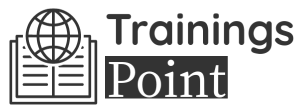Most organizations today are trying to get more work done at lower cost. One way to do that is to focus on individual productivity differences. According to research, some people are much more productive than other people. In fact, top performers may get as much as TWENTY TIMES the work results of average performers. How do they do that? The answer has to do with competencies. Competencies describe individuals who get results. This webinar will review competency modeling and describe what competencies are, how to identify them, and how to use them.
AREA COVERED
I. Defining competencies and describing how they are identified and used
- What are competencies?
- How are competencies better than job descriptions for pinpointing individual differences?
- How can the use of competencies lead to higher productivity and lower costs?
- How do competencies relate to talent?
- What are the best ways to identify competencies so as to find individual differences leading to productivity?
- How can competencies guide the entire HR system of an organization?
II. Summarizing best practices in competency modelling
- What are best practices?
- Why should your organization’s leaders care about best practices in competency modelling?
- What tool can help you compare your organization against global best practice in competency modelling?
III. Questions and answers
LEARNING OBJECTIVES
- Define competencies
- Describe how competencies are identified and used
- Summarize best practices in competency modeling efforts
- List ways to identify and manage competencies
- Make the business case to managers about the value of competency management as a strategy to increase productivity
WHO WILL BENEFIT?
- HR practitioners
- Trainers and training managers
- Operating managers
I. Defining competencies and describing how they are identified and used
- What are competencies?
- How are competencies better than job descriptions for pinpointing individual differences?
- How can the use of competencies lead to higher productivity and lower costs?
- How do competencies relate to talent?
- What are the best ways to identify competencies so as to find individual differences leading to productivity?
- How can competencies guide the entire HR system of an organization?
II. Summarizing best practices in competency modelling
- What are best practices?
- Why should your organization’s leaders care about best practices in competency modelling?
- What tool can help you compare your organization against global best practice in competency modelling?
III. Questions and answers
- Define competencies
- Describe how competencies are identified and used
- Summarize best practices in competency modeling efforts
- List ways to identify and manage competencies
- Make the business case to managers about the value of competency management as a strategy to increase productivity
- HR practitioners
- Trainers and training managers
- Operating managers
Speaker Profile
 William J. Rothwell
William J. Rothwell
William J. Rothwell, Ph.D., SPHR, SHRM-SCP, CPLP Fellow is President of Rothwell & Associates, Inc. He has worked in HR for more than 40 years and has also worked as a consultant for more than 50 multinational corporations--including Motorola China, General Motors, Ford, and many others. In 2012 he earned ASTD’s prestigious Distinguished Contribution to Workplace Learning and Performance Award, and in 2013 ASTD honored him by naming him as a Certified Professional in Learning and Performance (CPLP) Fellow. (ASTD is now called ATD.) In 2014 he was given the Asia-Pacific International Personality Brandlaureate Award.He has authored, coauthored, edited or coedited …
Upcoming Webinars

California Meal and Rest Breaks: What You Dont Know Can Cos…

Responding to EEOC Discrimination Charges-What's Your Busin…

Female to Female Hostility @Workplace: All you Need to Know

With Mandatory Paid Leave Gaining Ground Is It Time To Do A…


Conflict Resolution - Prevent, De-escalate, Resolve

Implementing an Effective Human Error Reduction Program

When Employees Travel: Wage and Expense Rules Employers Mus…

Validation Statistics for Non-Statisticians

Form 1099-MISC and 1099-NEC Compliance Update 2024

The Totally Organized Professional Is All About Outcomes

Project Management for Non-Project Managers - Scheduling yo…

GAMP5, Second Edition and Alignment with Computer Software …

Why EBITDA Doesn't Spell Cash Flow and What Does

Sunshine Act Reporting - Clarification for Clinical Research

Understanding the Math of HR… So You Can Show How HR Impact…

FFIEC BSA/AML Examination Manual: What Compliance Officers …

How to Address ISO's New Climate Change Requirements

I-9 Audits: Strengthening Your Immigration Compliance Strat…


Re-imagine Finance & Accounting Made Simple. Three Webinars…

Stay Interviews: A Powerful and Low-Cost Employee Engagemen…


How To Conduct An Internal Harassment And Bullying Investig…


Effective Onboarding: How to Welcome, Engage, and Retain Ne…

Managing Toxic & Other Employees Who Have Attitude Issues


Analytical Method Validation Under Good Laboratory Practic…

Do's and Don'ts of Documenting Employee Behaviour, Performa…

Do's and Don'ts of Giving Effective Feedback for Performanc…

Onboarding New Hires: Leverage the Potential of Artificial …

Using Behavior Based Interviewing for Finding the Best Matc…

Tattoos, hijabs, piercings, and pink hair: The challenges …

How to Document Employee Discussions and Why it is Important

Harassment, Bullying, Gossip, Confrontational and Disruptiv…

Best Practices for Working With Vendors and Suppliers

Understanding the Artificial Intelligence Landscape

Marketing to Medicare or Medicaid Beneficiaries - What You …

Accounting For Non Accountants : Debit, Credits And Financi…

Principles & Practices for the Cybersecurity of Legacy Medi…

Independent Contractor vs. Employee New Rule Issued by The …

Ultimate Persuasion Strategies! - Secret Influence Tools & …

Kicking your Employee Retention Efforts into Overdrive: Sta…
